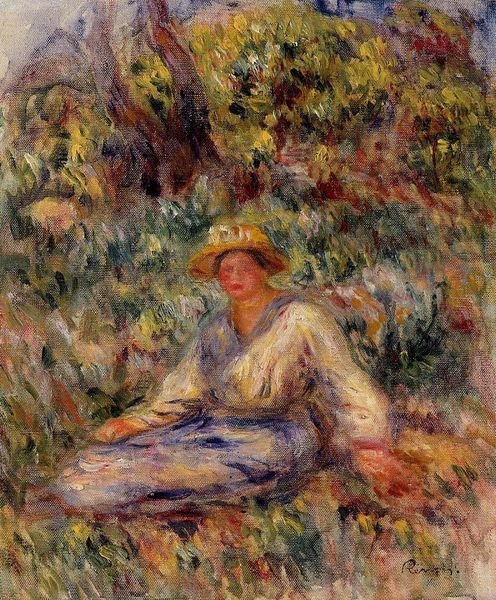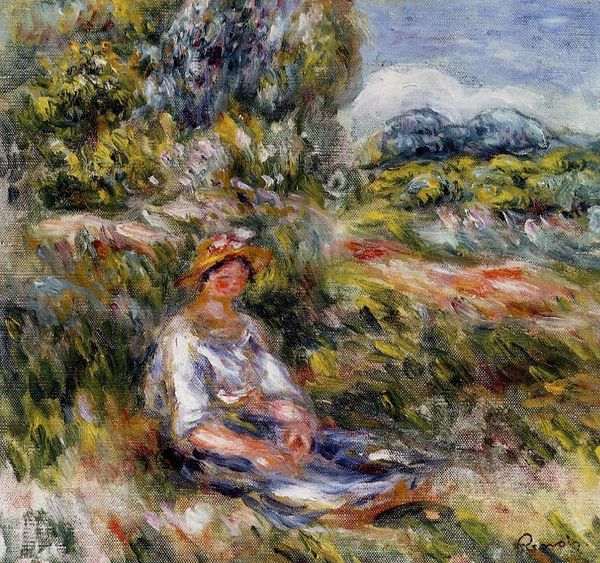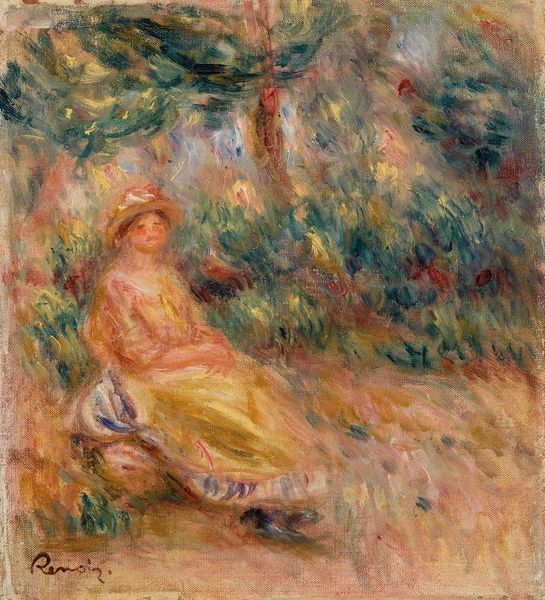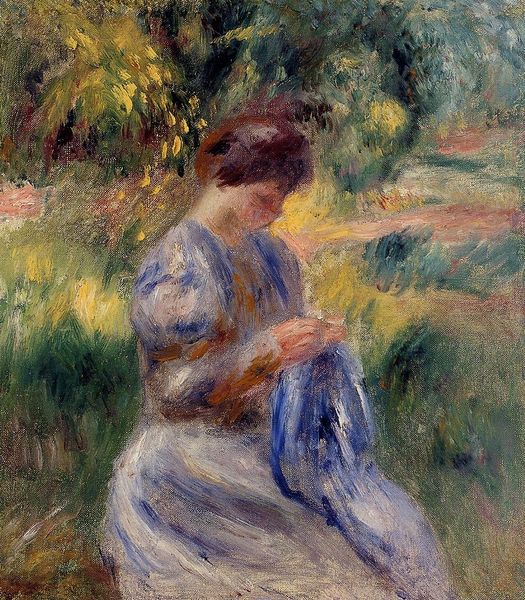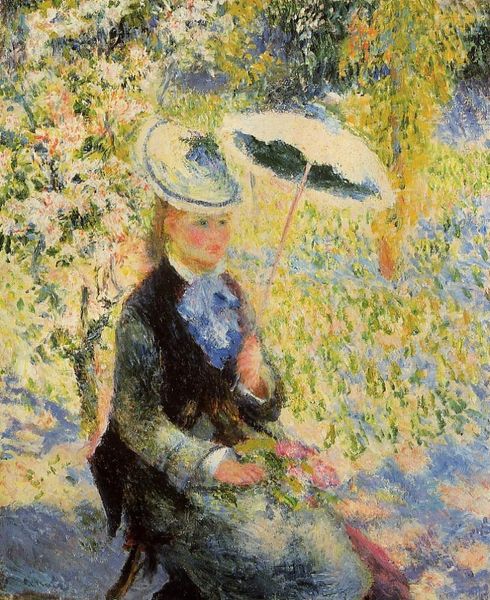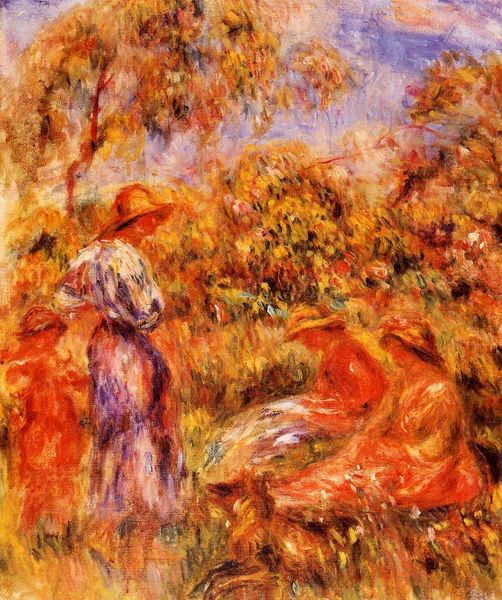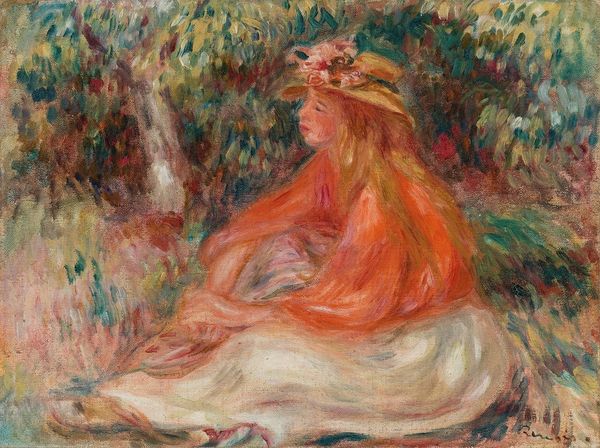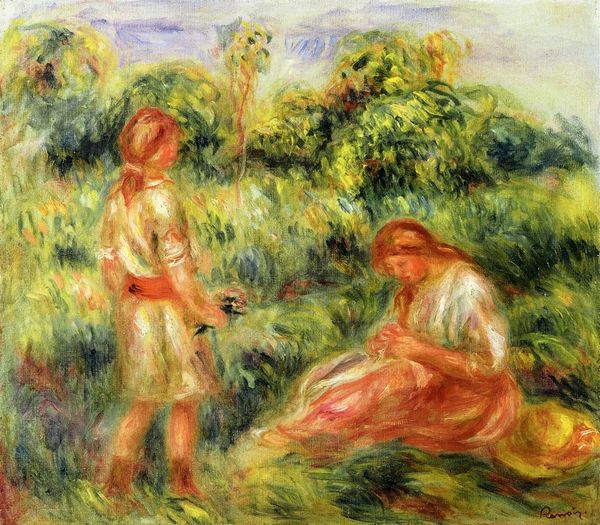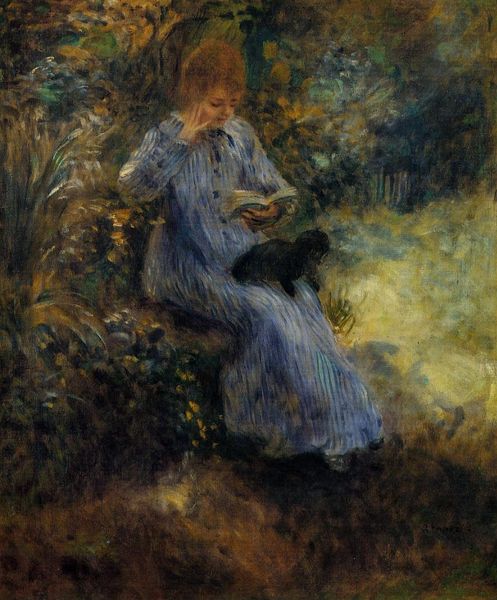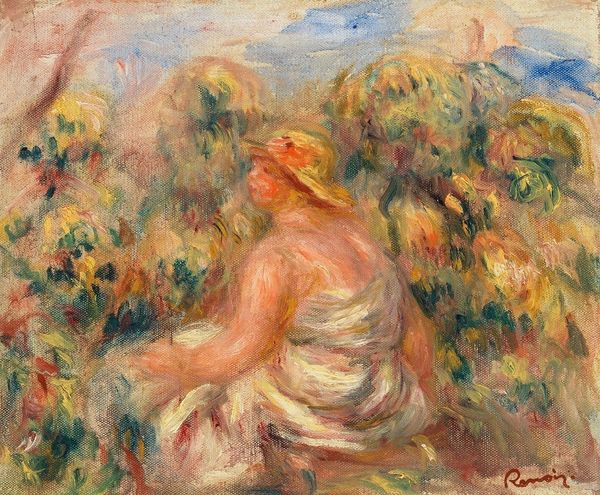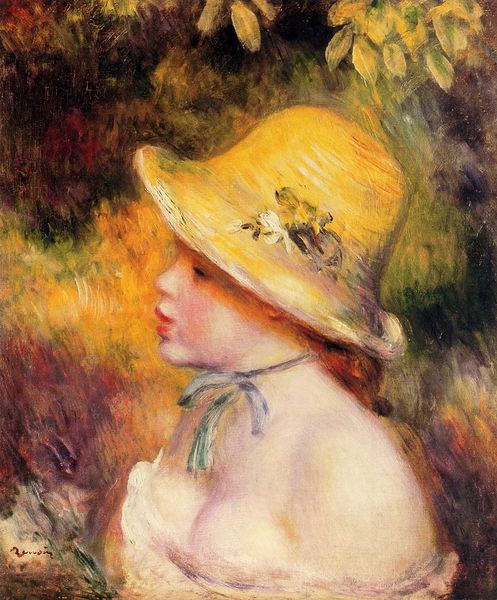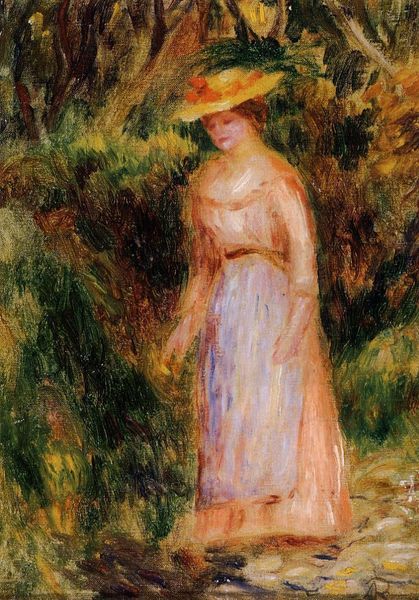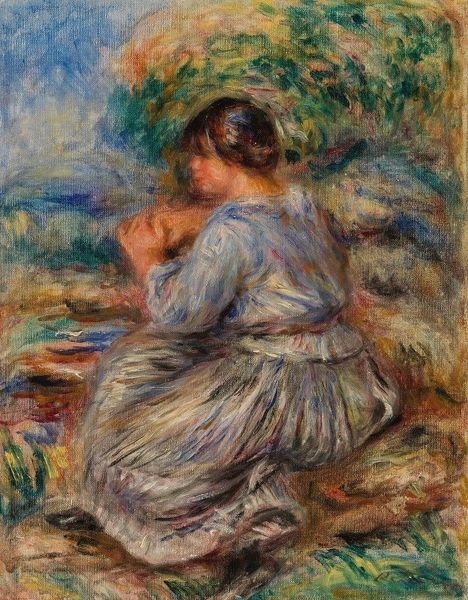
Copyright: Public domain
Editor: So, this is Renoir's "Young Woman in a Garden," painted in 1916. It's just bursting with color and light, really capturing the feel of a warm day. The woman seems so relaxed, almost blending in with the flowers. What strikes you when you look at it? Curator: I'm immediately drawn to the archetypal representation of woman as the anima, an earth mother of sorts. See how Renoir uses that golden light, almost like a halo, to connect her to the abundance of nature around her? Editor: Anima? That's interesting. I hadn't thought about it like that. So, the flowers aren't just decorative? Curator: Not at all! They’re integral. Consider the symbolic language of flowers throughout art history. Each bloom carries its own weight – innocence, beauty, but also ephemerality. This explosion of nature mirrors an inner landscape. Notice how the dog nestles against her, completing the idyllic imagery. Editor: Yes, I see that, she definitely feels like part of that scenery, almost a nymph within nature. Is it supposed to make you feel peaceful? Curator: Peaceful, perhaps, but also a little melancholic. Remember, this was painted during World War I. This idyllic scene could be read as a yearning for simpler times, for a lost harmony. Does it remind you of any myths or stories? Editor: Maybe something like a classical Arcadia, a lost paradise? Curator: Exactly! Renoir’s work is saturated in cultural memory. This is his Arcadia, painted in the shadow of modern conflict. Editor: That gives it a whole new dimension. I was just seeing a pretty picture, but now I see this yearning for a lost world, communicated through those repeating cultural symbols and visual echoes. Curator: Indeed. Art speaks in a symbolic language, if we learn to listen.
Comments
No comments
Be the first to comment and join the conversation on the ultimate creative platform.
